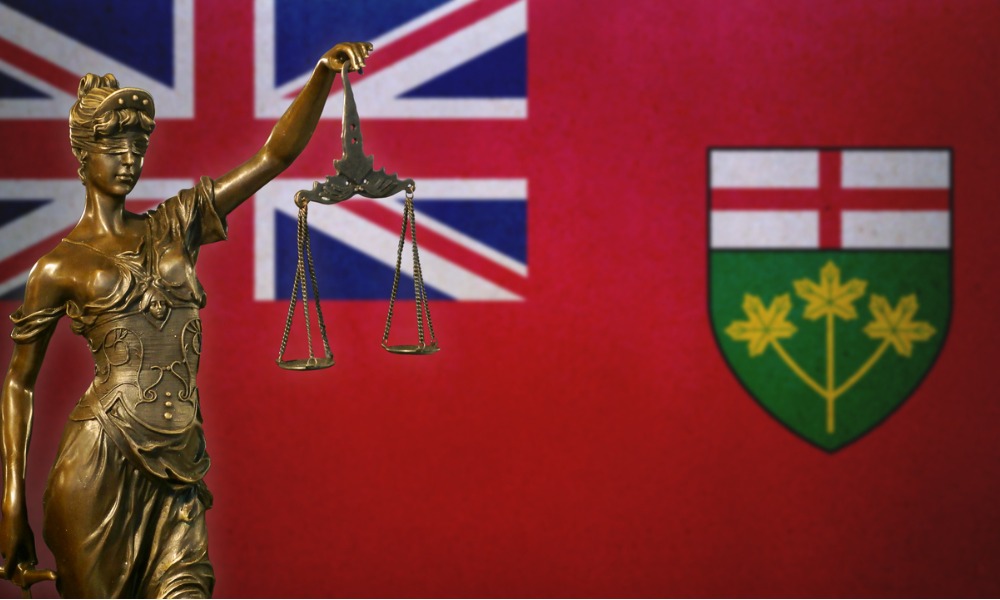Less is truly more when it comes to advocacy, especially when preparing for trial, say a panel of litigation experts.
"The problem is we all know the fundamentals, but we don't use them,"says David Stockwood of Stockwoods LLP, one of the panelists at therecent Advocates' Society spring symposium.
"It's amazing how often we charge off without knowing the case," he says.
Stockwood, who practises corporate/commercial litigation, advises thatit's important to do an early and considered analysis of the issue.
"Too often, counsel think they grasp the gist of the matter and rush off to war—wherever that is—without a fixed idea of where they are going. Only a clear analysis of the merits and weaknesses of the case and a concrete plan of action should set all else in motion."
Pleadings should be brief, Stockwood says.
"Many counsel seem to have fallen into a War and Peace style of pleading," he says. "Pleadings are meant to be a succinct statement of the facts and conclusions. Instead they often read like briefs, and—here's the oxymoron—extremely long briefs at that."
After that, it's on to the discovery process, which he says is in a state of chaos in its current form. He says the "semblance of relevance" test has forced counsel to waste time and resources assembling documents, many of which won't be used at trial.
"You collect these 30,000 documents and you end up using 30 of them," he says. "Try and focus on what's important."
Benjamin Zarnett, president of the Advocates' Society and senior partner in Goodmans LLP's litigation group, says the reduction of documents is key to simplifying a case. You don't need multiple copies of documents, drafts, handwritten notes of someone who won't be called as a witness, or back-up documents if not disputed.
"If it's not going to be talked about, exclude it," he says.
On the flip side, he says there's a false notion that every document should be revisited at trial. That idea has to be nixed, he says.
Zarnett conducted an informal poll with judges and asked them to identify the biggest problems in trials. Documents, witnesses, and lawyers were most often identified as a problem,
he says.
It's important to be mindful of the use of documents at trial, he says. For example, number the pages of long documents to avoid "groping" in the courtroom.
"Try to avoid that," he says. "Try to make it as useful and as user-friendly as possible so you can get right to the issue."
Sheila R. Block, a senior trial and appellate counsel at Torys LLP, says that at trial, the opening is where less is more. It's a chance to convey your theme and focus the judge on the main points to watch for.
"Although you can't argue in an opening, you can cluster the facts and let them argue for you."
Zarnett says you need to alert the judge to the issues: what has been admitted not to be at issue, what is agreed to about documents, and what witnesses are being called to testify to.
"Make it clear that because of the issues, admissions, agreements, etc., the witnesses are being called to address certain points and why those are necessary for the judge to hear about."
He says every cross-examination should have a goal as well. "We practise an art, not a science," Zarnett says.
"Most judges will say once a contradiction has been shown there's no need to bat it around for half-an-hour."
Block agrees and says counsel need to quit whining. She says there's too much bickering going on in the courtroom, and if you can avoid it, you'll have a shorter and more pleasant trial.
Zarnett urges avoiding cross-examinations that consist of "reading back the examination-in-chief with raised eyebrows."
Stockwood notes the importance of staying focused throughout the entire process.
"Sometimes—surprise, surprise—things come out in litigation that are different from what your client told you," he says. "You have to focus and move on."
When it comes to effective closings, Block says it's crucial to set a time limit to discipline both sides.
"You have to go clear, as Leonard Cohen would say, and answer the hard questions. You have to contextualize your bad facts and explain why they don't matter . . . and make arguments that appeal to common sense and human nature."
Zarnett acknowledges that taking a simplified approach is not as easy as it sounds.
"It's hard work to simplify something," he says. "We're just making it look simple."
There are a few benefits to taking a simplified approach, he says. First and foremost, it will be easier to get a trial date if the trial will take less time.
"You can have a long trial in Toronto if you want, but you better bring your 2009 diary with you."
Another advantage is that a judge is less likely to reward lengthy, overcomplicated advocacy in favour of a simplified approach, but that issue still needs buy-in from the courts, he says.
Block says advocacy can summed up in two words: making choices.
"If you make choices, they can be wrong," she says, "but you have to make them."
"The problem is we all know the fundamentals, but we don't use them,"says David Stockwood of Stockwoods LLP, one of the panelists at therecent Advocates' Society spring symposium.
"It's amazing how often we charge off without knowing the case," he says.
Stockwood, who practises corporate/commercial litigation, advises thatit's important to do an early and considered analysis of the issue.
"Too often, counsel think they grasp the gist of the matter and rush off to war—wherever that is—without a fixed idea of where they are going. Only a clear analysis of the merits and weaknesses of the case and a concrete plan of action should set all else in motion."
Pleadings should be brief, Stockwood says.
"Many counsel seem to have fallen into a War and Peace style of pleading," he says. "Pleadings are meant to be a succinct statement of the facts and conclusions. Instead they often read like briefs, and—here's the oxymoron—extremely long briefs at that."
After that, it's on to the discovery process, which he says is in a state of chaos in its current form. He says the "semblance of relevance" test has forced counsel to waste time and resources assembling documents, many of which won't be used at trial.
"You collect these 30,000 documents and you end up using 30 of them," he says. "Try and focus on what's important."
Benjamin Zarnett, president of the Advocates' Society and senior partner in Goodmans LLP's litigation group, says the reduction of documents is key to simplifying a case. You don't need multiple copies of documents, drafts, handwritten notes of someone who won't be called as a witness, or back-up documents if not disputed.
"If it's not going to be talked about, exclude it," he says.
On the flip side, he says there's a false notion that every document should be revisited at trial. That idea has to be nixed, he says.
Zarnett conducted an informal poll with judges and asked them to identify the biggest problems in trials. Documents, witnesses, and lawyers were most often identified as a problem,
he says.
It's important to be mindful of the use of documents at trial, he says. For example, number the pages of long documents to avoid "groping" in the courtroom.
"Try to avoid that," he says. "Try to make it as useful and as user-friendly as possible so you can get right to the issue."
Sheila R. Block, a senior trial and appellate counsel at Torys LLP, says that at trial, the opening is where less is more. It's a chance to convey your theme and focus the judge on the main points to watch for.
"Although you can't argue in an opening, you can cluster the facts and let them argue for you."
Zarnett says you need to alert the judge to the issues: what has been admitted not to be at issue, what is agreed to about documents, and what witnesses are being called to testify to.
"Make it clear that because of the issues, admissions, agreements, etc., the witnesses are being called to address certain points and why those are necessary for the judge to hear about."
He says every cross-examination should have a goal as well. "We practise an art, not a science," Zarnett says.
"Most judges will say once a contradiction has been shown there's no need to bat it around for half-an-hour."
Block agrees and says counsel need to quit whining. She says there's too much bickering going on in the courtroom, and if you can avoid it, you'll have a shorter and more pleasant trial.
Zarnett urges avoiding cross-examinations that consist of "reading back the examination-in-chief with raised eyebrows."
Stockwood notes the importance of staying focused throughout the entire process.
"Sometimes—surprise, surprise—things come out in litigation that are different from what your client told you," he says. "You have to focus and move on."
When it comes to effective closings, Block says it's crucial to set a time limit to discipline both sides.
"You have to go clear, as Leonard Cohen would say, and answer the hard questions. You have to contextualize your bad facts and explain why they don't matter . . . and make arguments that appeal to common sense and human nature."
Zarnett acknowledges that taking a simplified approach is not as easy as it sounds.
"It's hard work to simplify something," he says. "We're just making it look simple."
There are a few benefits to taking a simplified approach, he says. First and foremost, it will be easier to get a trial date if the trial will take less time.
"You can have a long trial in Toronto if you want, but you better bring your 2009 diary with you."
Another advantage is that a judge is less likely to reward lengthy, overcomplicated advocacy in favour of a simplified approach, but that issue still needs buy-in from the courts, he says.
Block says advocacy can summed up in two words: making choices.
"If you make choices, they can be wrong," she says, "but you have to make them."







